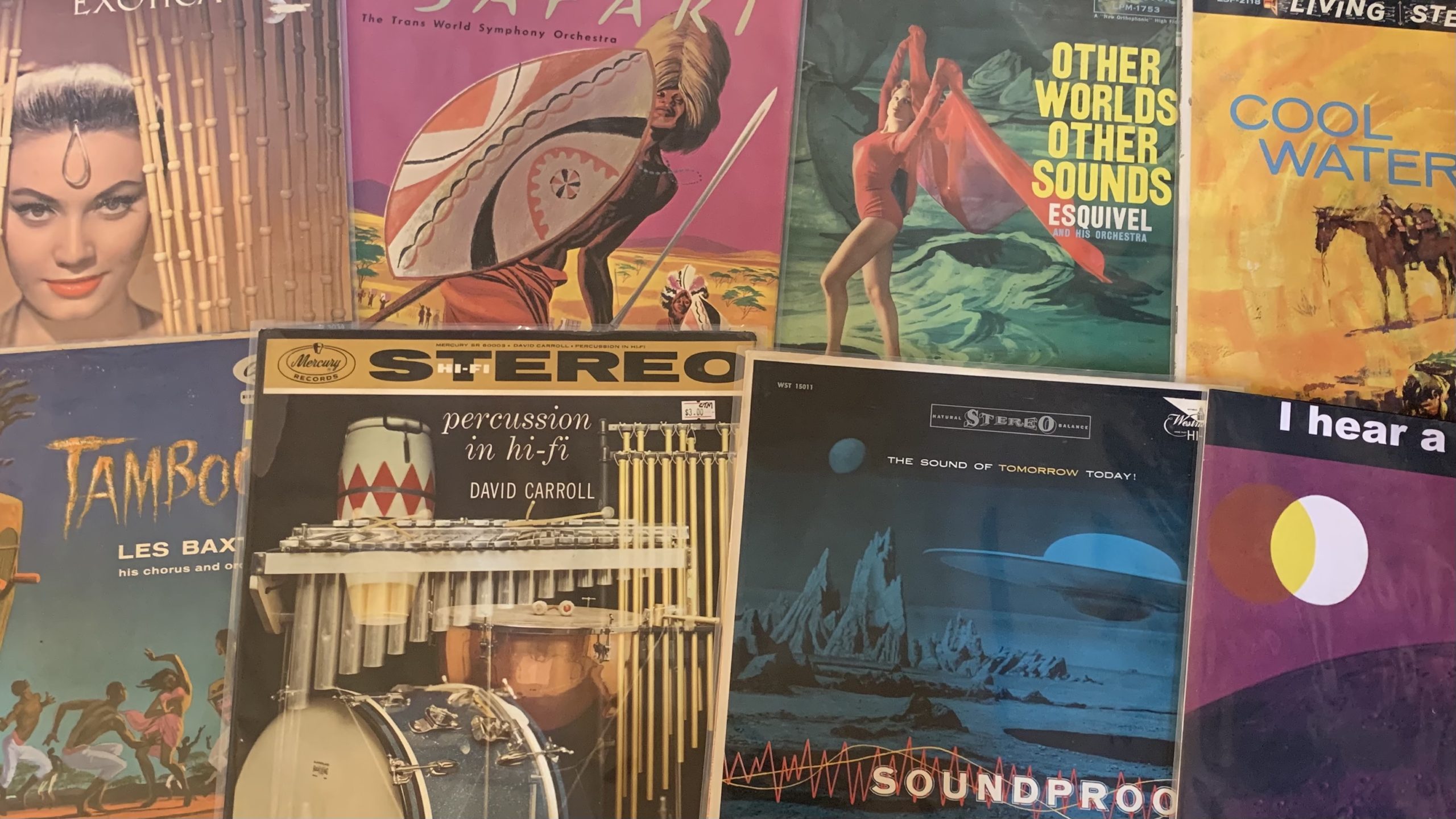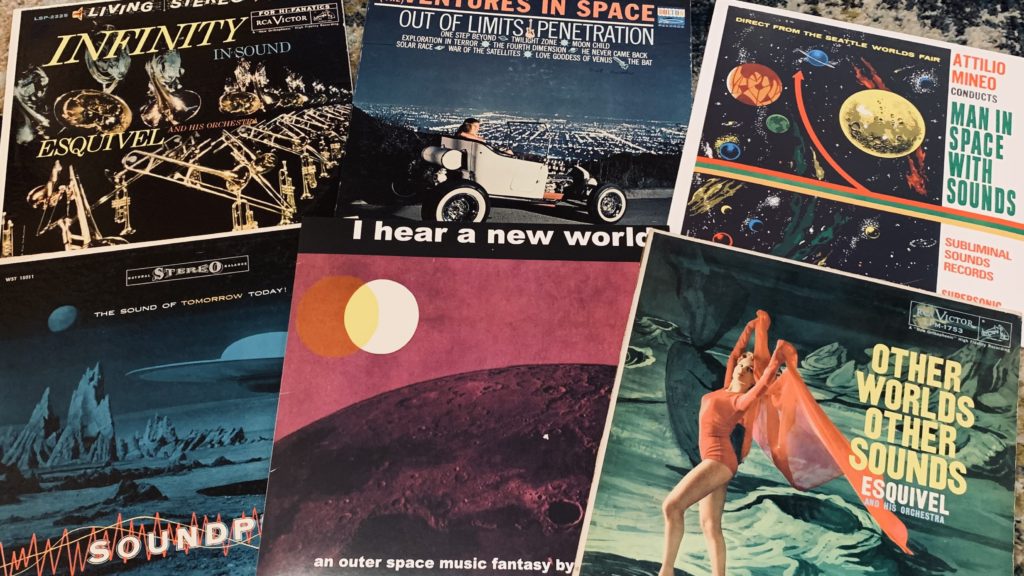
It’s the mid-twentieth century, and America is locked in an existential Cold War with the Soviet Union. At the center of this conflict of superpowers is the so-called “Space Race.” While the true origins of both nations’ thirst for space exploration were founded in purposes of both a defensive and offensive nature, the social, cultural, and economic implications of journeying beyond the Earth’s atmosphere created a level of excitement among the American people that is hard to imagine today. Everywhere one turned, they were bombarded with images of a future that had once seemed like science fiction, but that now felt so tantalizingly possible. Film, literature, television, advertising, and fashion reflected this fascination. Music was no different.
Just as exotica had attempted to sell the “lure of the unknown” to eager, middle-class audiences, so too did “Space Age Pop” trade in the realm of worlds whose truths would be stretched, distorted, and misrepresented; all in the name of promising an experience in listening. While the falsehoods perpetuated about the outer edges of the galaxy (and beyond) would do far less damage than the stereotypes spread by exotica, space age pop would provide a glimpse of the future that was short-sighted at best, and frighteningly ignorant at worst – particularly in the sense that the tools which promised to expand our perceptions of the universe would ultimately extend the reach of a global “nuclear shadow.”
Musically speaking, “Space Age Pop” is a hard style to pin down. Like exotica, many of its top practitioners were trained in jazz or classical music. In fact, many of those practitioners were the very same ones who were simultaneously cashing in on exotica. Consequently, rather than being “true believers” in the possibilities of the future, many were just opportunistic musicians and producers, capitalizing on the ephemeral appeal of a fad tied to a rapidly passing moment in time. With that said, much of the music that they created is not without (often immense) charm. There is a wide-eyed optimism to the best space age pop – one that makes it endearing over a half-century past its creation.
Another critically important element of space age pop is found in its production. In order to create the sounds of unreachable locales, producers would have to challenge the still-conservative mentality of record labels and studios. The most brilliant of these innovators – namely Joe Meek and Raymond Scott – would ultimately take to building their own studios, in an effort to bring their visions to life. It’s here that space age pop provides its most enduring legacy, as it would prove to be a critical influence on later musical movements.
That combination of talent, charm, and innovation always makes for the possibility of some truly special music. However, like all of the genres that we’ve covered during “Mid-Century Kitsch Month,” there’s an element of danger in just going into this music blindly. Hopefully, if you’re a newcomer, you’ll find the following playlist to provide an intriguing start to your journey into the realm of space age pop:
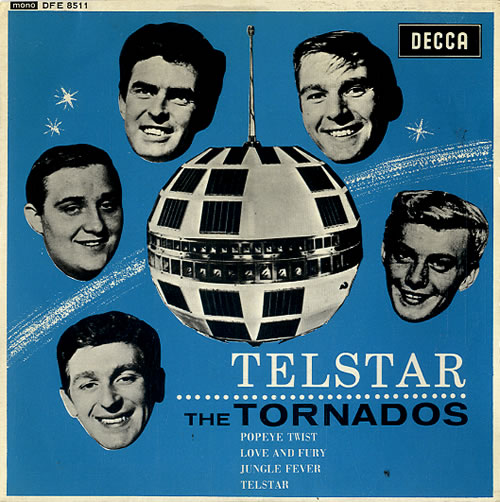
THE definitive space age pop song, “Telstar” topped the charts on both sides of the Atlantic in late 1962. Written and produced by Joe Meek – arguably the most important figure in space age pop – “Telstar” brought a futuristic element to the instrumental surf rock sound that had recently been popularized by acts like The Shadows and The Ventures. It’s a triumphant single; brilliantly produced and instantly memorable.
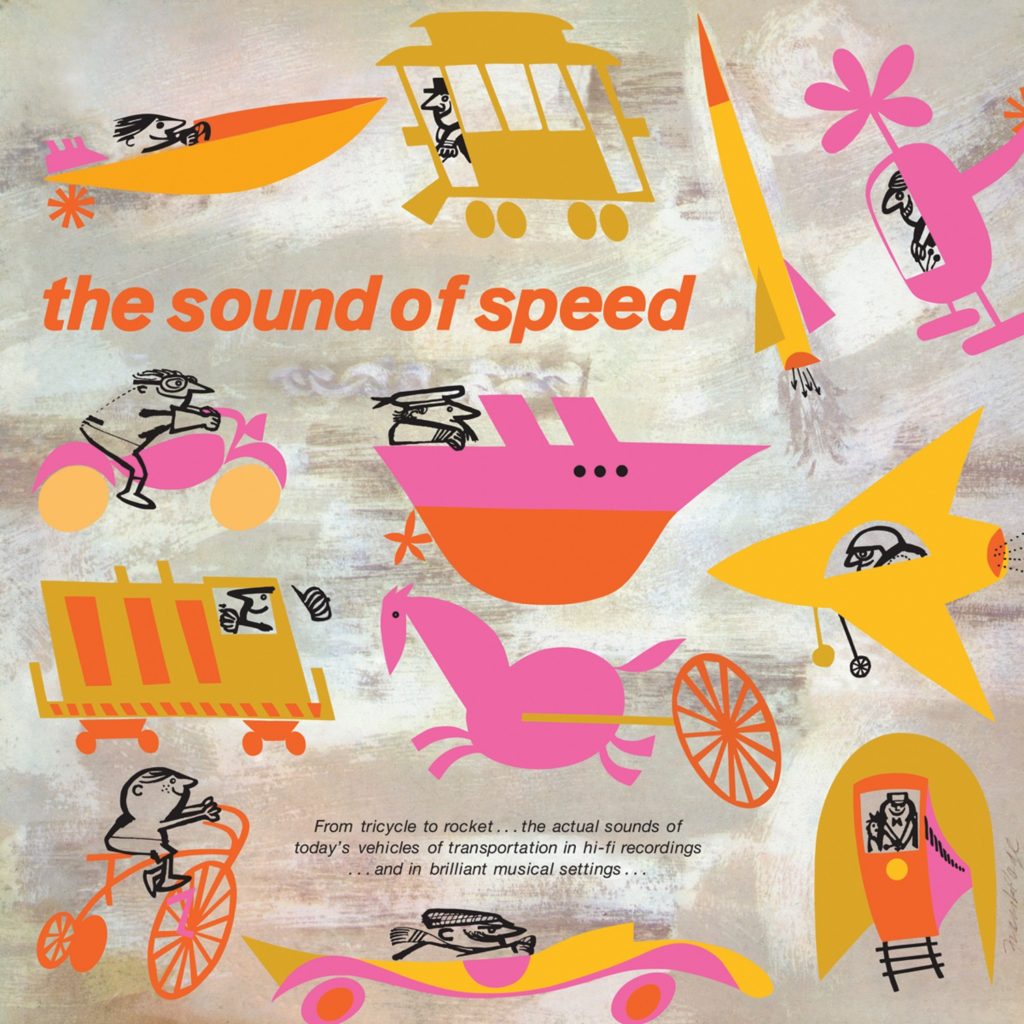
Each of the twelve songs on Bob Thompson’s 1960 LP, The Sound of Speed, was designed to evoke a modern mode of transportation. It’s an interesting gimmick, and one that makes for a frequently intriguing concept album. “Count Down” may have been meant to suggest a missile, but its cinematic grandeur and climatic blast off make for a fitting representation of the voyage upon which we have just embarked.
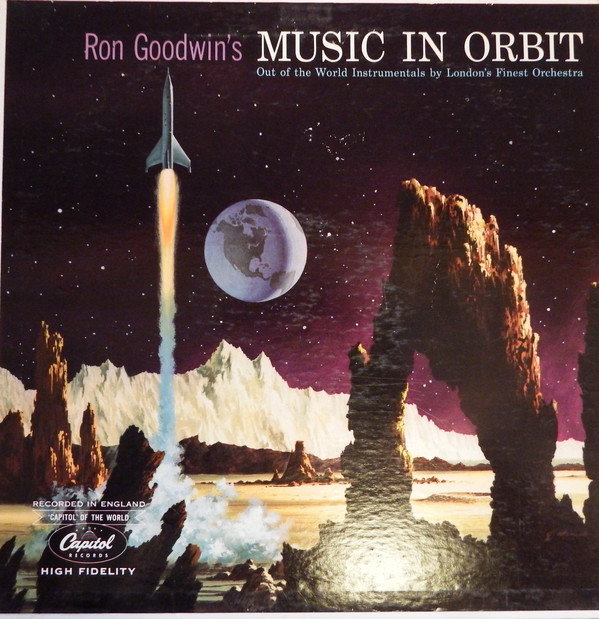
British composer Ron Goodwin capitalized on the fascination with all things “space age” on 1958’s Music in Orbit (originally released as Out of This World!). Goodwin’s brand of space age pop leans a bit toward the heavily-orchestrated end of the spectrum – and away from the novel sounds that marked many contemporary productions – but its “widescreen” nature makes for a consistently evocative listen. “Departure” is the album’s lead-off track, and it captures the nervous anticipation of an unprecedented journey ahead.
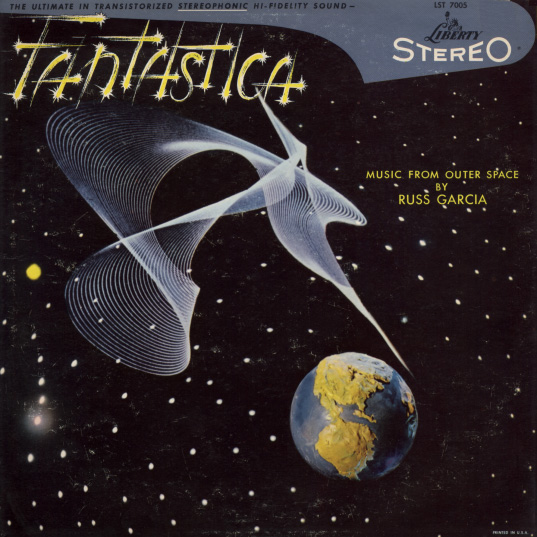
Among the great practitioners of fifties-era mood music, Russ Garcia turned in one of his finest works with 1959’s Fantastica. “Into Space” is an alluring introduction to the album, mixing Garcia’s typically-lush orchestration with field recordings and otherworldly flourishes. It’s the sonic equivalent of drifting through space, without being bound by the pull of gravity.
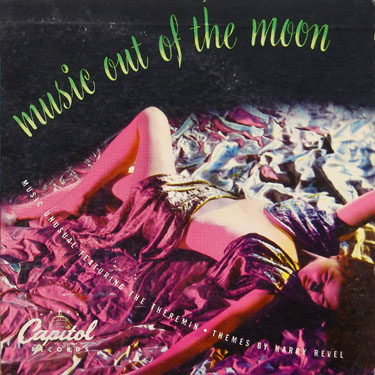
Harry Revel composed Music Out of the Moon in 1947, and a young Les Baxter – still a few years away from establishing the blueprint for exotica with 1951’s Ritual of the Savage – brought it to life with his expressive orchestration. Adding significant intrigue to one of the earliest examples of space-age pop are the wordless vocal choir, and the work of Dr. Samuel J. Hoffman, whose use of the theremin adds an eerie undertone to an already alluring piece.
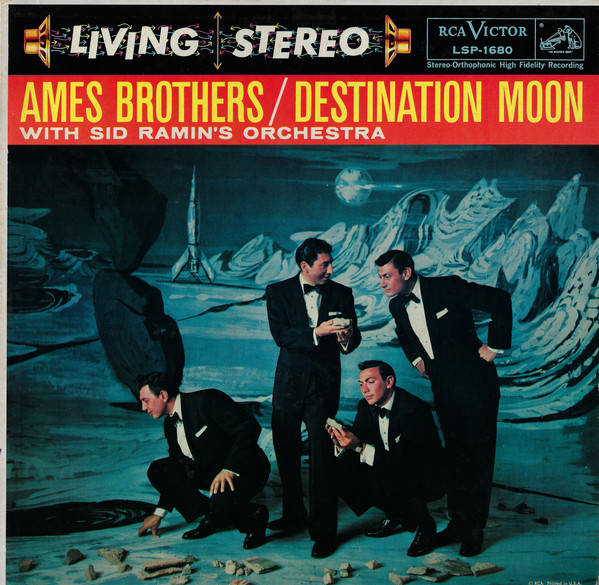
Oftentimes, “space age pop” seems to forget that it is, in fact, pop music. This often works to its advantage, seeing as how pop music of the late-fifties had a tendency to come drenched in sentimentality; emotions that the cold, unfeeling environment of space has little time for. Needless to say, plenty of artists and producers would attempt to capitalize on the peaking interest in space-oriented material. The Ames Brothers were a successful vocal group who made an impressive – if also a tad bit cheesy – impression on this track from 1958’s Destination Moon.

Vocals tend to work best in space age pop when they don’t attempt to covey earthly emotions through earthly language. Case in point, Mary Mayo’s wordless chants add an intoxicating element to Dick Hyman’s 1963 LP, Moon Gas, perhaps most intriguingly on “Maid of the Moon” – which creates a rich ambience, even in its minimalistic approach.
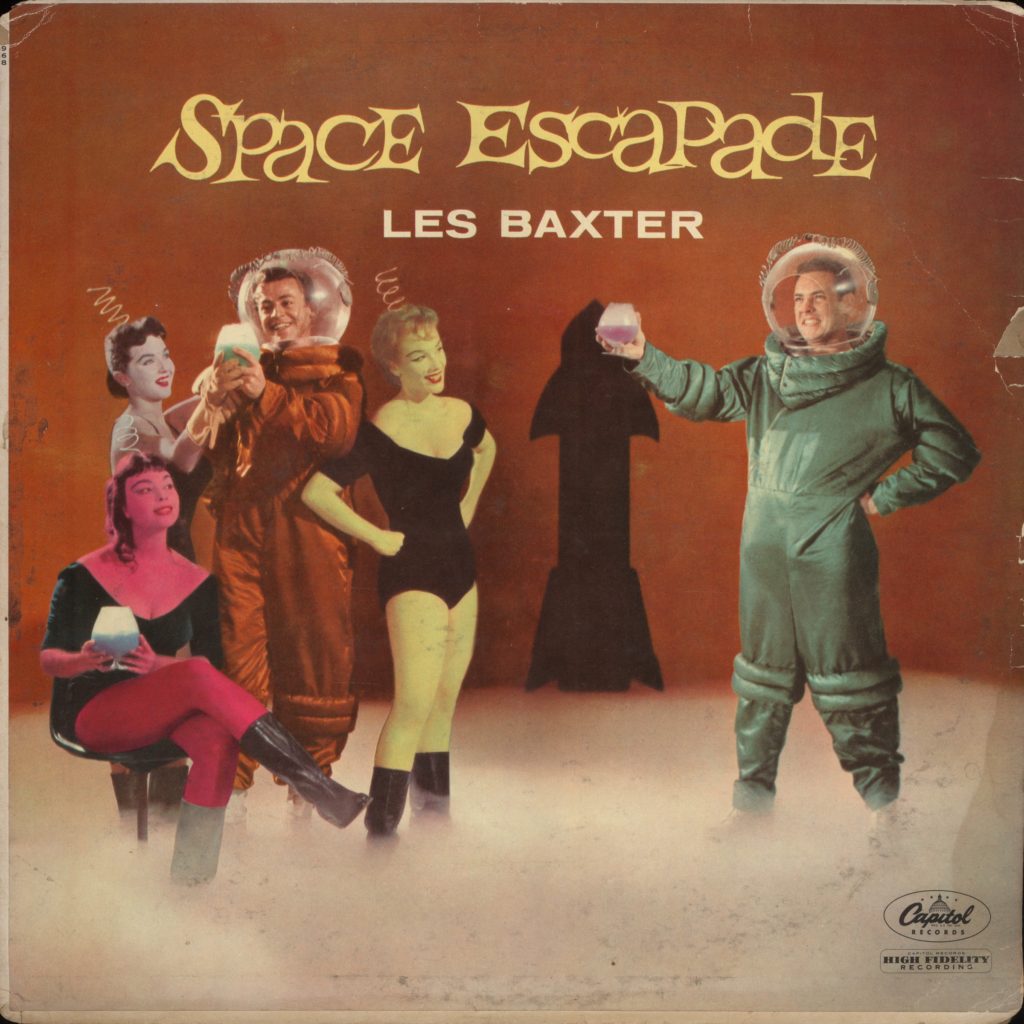
Les Baxter makes his second of three appearances on this list with a track from 1958’s Space Escapade. Its cover art alone making it a highly sought-after artifact of mid-century kitsch, the album stands among the best works in Baxter’s discography. “Moonscape” is representative of Baxter’s lush, cinematic arrangements, and it makes a fine closing song for the Moon-themed segment of our itinerary.
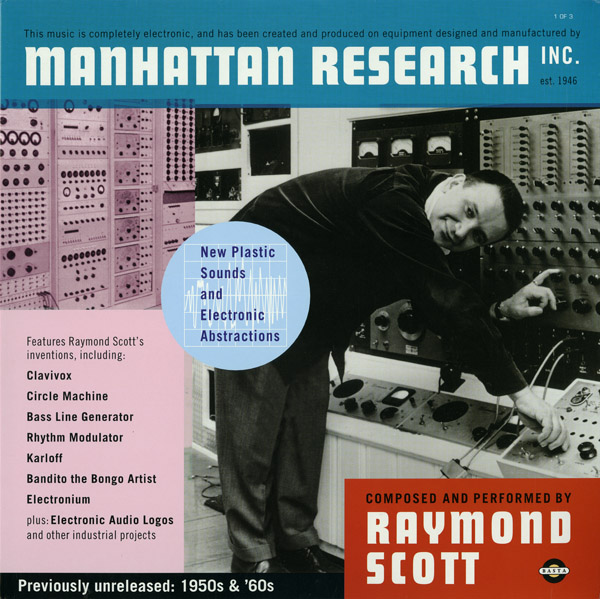
While his iconic recordings of the 1930s were already enough to cement his reputation as one of America’s most innovative composers, Raymond Scott became a pioneer of electronic music in the years following World War II. The creator of several decades-ahead-of-their-time electronic instruments, Scott used his Manhattan Research laboratory to create musical works that blurred the lines between art and science. One of his most endearing pieces, “Portofino 1” anticipates the landmark seventies-era recordings of Kraftwerk, in its combination of melodic warmth and rhythmic heart.

We’ve passed the Moon, and entered into the orbit of Venus – a perfect opportunity for another visit to Russ Garcia’s Fantastica. “Venus” is another lovely, drifting track that balances Garcia’s penchant for evocative soundscapes with measured restraint. Like the second planet from the Sun, “Venus” is mysterious, despite its relative proximity.
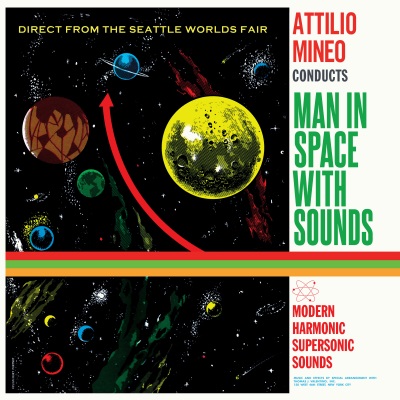
Attilio “Art” Mineo composed the tracks that make up Man in Space with Sounds in the 1950s, but they were repurposed as part of the 1962 Seattle World’s Fair. While many of the songs in this playlist revel in the bright future promised by space exploration, Mineo’s work – including the optimistically-titled “Welcome to Tomorrow” – trades in a decidedly foreboding sound. All of Man in Space is worth hearing, but this track makes for a particularly intriguing opening to a fascinating project.
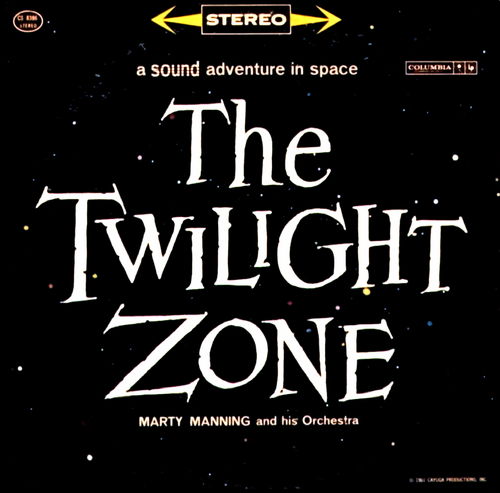
Speaking of foreboding, the peak of the space age pop genre coincides with the 1959 arrival of The Twilight Zone. The massively popular television series piqued the curiosities of American audiences, and would become a cultural touchstone in its own right. Composer Marty Manning would use the series as the primary inspiration for his 1961 album of the same name – capitalizing on both the popularity of its namesake, and the interest in all things sci-if. “Forbidden Planet” is one of the LP’s most rewarding tracks, and it sets the tone for the next phase of our space odyssey.
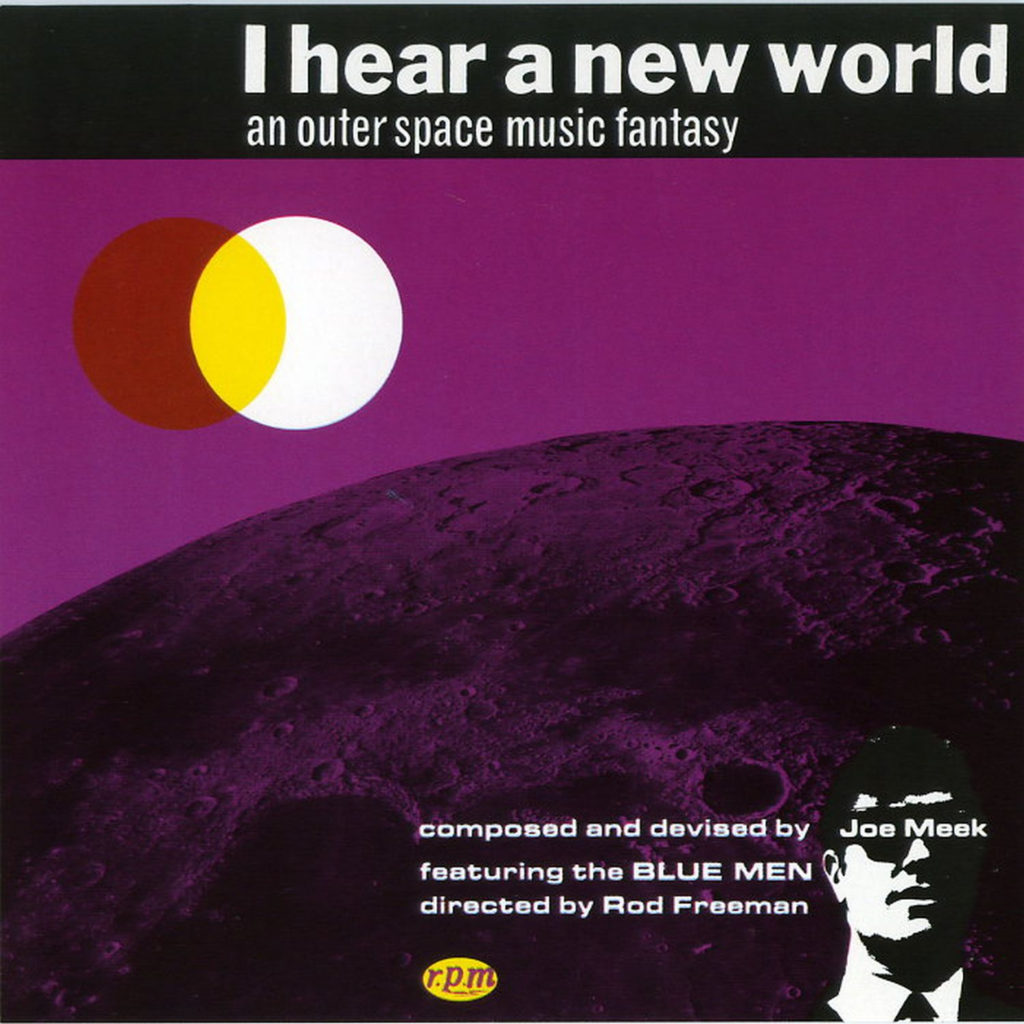
In addition to his work behind the scenes, Joe Meek also aimed to release music under his own name. The first such release was an abridged version of his 1960 song cycle, I Hear a New World. Eventually issued with its intended, twelve-song track sequence, Meek’s masterpiece is now widely considered to be a “lost classic” of the space-age. Its haunting opening song – the only track to feature conventional vocals – speaks to the allure of the unknown; it’s a world “so strange and so real,” that one can’t resist its call.
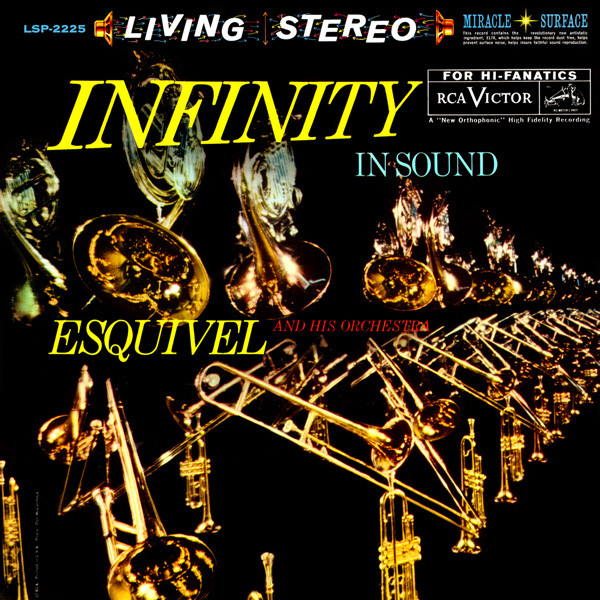
Juan Garcia Esquivel is one of the central figures of mid-century kitsch music. Whether it’s lounge, exotica, or space age pop, Esquivel stood among the most successful recording artists of the era, by creating highly immersive soundscapes with idiosyncratic ornamentation. “Music Makers” is a highlight of 1960’s Infinity in Sound – arguably Esquivel’s best regarded LP.
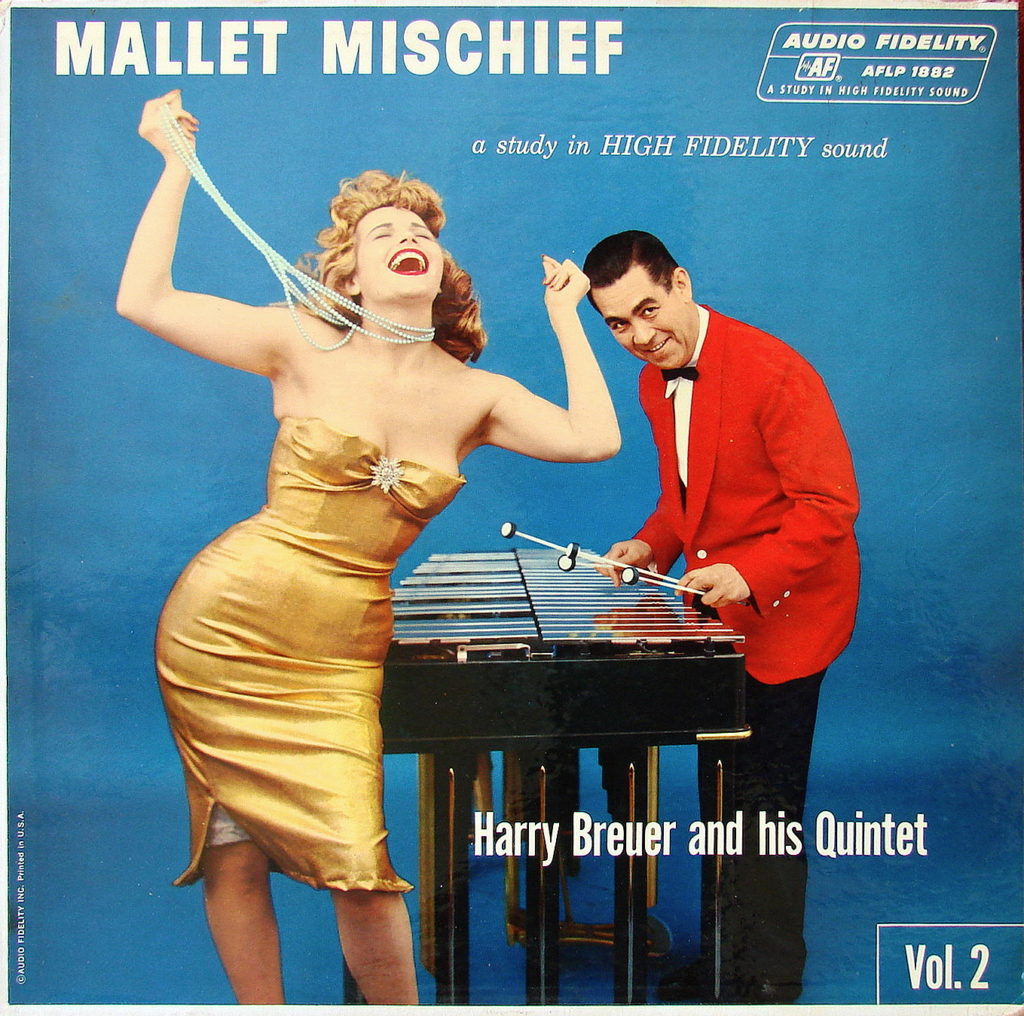
Perhaps reflecting the “utopian” leanings of futurism, space age pop tended to trade in remarkably “clean” sounds, but ones whose resonance and timbre projected a somewhat alien nature. As is the case with exotica, mallet percussion was a frequent fixture of space age pop. So too were warbling organs. The combination of the two helped to make “Pavanne” an inviting highlight from Harry Breuer’s 1958 LP, Mallet Mischief. Their tone works to evoke a busy, but orderly urban setting, far beyond the realm of our own world.

Those bustling cityscapes are a common setting in space age pop, as this track from Les Baxter’s Space Escapade confirms. “The Commuter” is briskly paced, but immaculate in its precision mallet runs and shimmering string arrangement. It presents a vision of the future that is as optimistic as it is alluring.

Another Joe Meek arrangement and production, “Sky Men” failed to make a dent in the British charts, but it was a charming final single for Geoff Goddard. While he didn’t become a star performer, Goddard had achieved success as a songwriter; most notably with the Meek-produced 1961 John Leyton single, “Johnny Remember Me.” While many consider that hit to be a space age pop track, its concerns seem particularly terrestrial compared to the decidedly playful “Sky Men.”

Fans of J Dilla’s 2006 masterwork Donuts will no doubt recognize this Raymond Scott recording. Conceived as an advertising jingle for a cosmetics company, “Lightworks” features Scott’s forward-thinking electronic instrumentation alongside a vocal performance from Dorothy Collins, his then-wife. Even without its connection to a much-beloved later work, “Lightworks” is a charming piece of music all on its own.
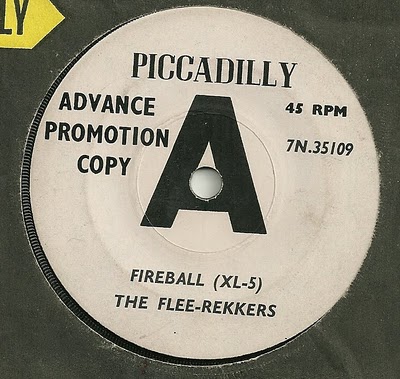
Produced by – you guessed it – Joe Meek, the final single from The Flee-Rekkers was a faithful homage to the theme song from the popular British television show, Fireball XL5. Straddling the line between surf rock and space age pop, the instrumental version of the track arguably surpasses the better-known Don Spencer vocal take that closes the show.
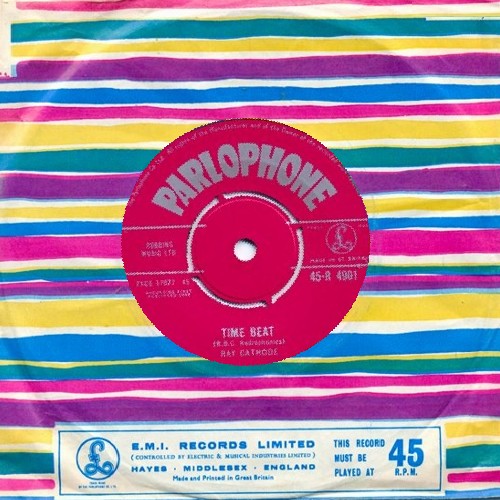
Here’s an oddity. “Ray Cathode” was actually a pseudonym for a collaboration between Maddalena Fagandini and future Beatles producer, George Martin. Released as the B-side to “Time Beat,” “Waltz in Orbit” probably bears more resemblance to the comedy records that Martin had cut his teeth on, but the cavalier spirit that would define his greatest production work is still on display here.
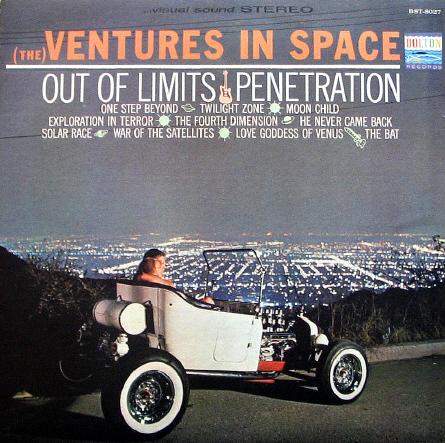
One of the defining surf rock groups, Seattle’s Ventures also dabbled in space age pop. 1963’s (The) Ventures in Space was one of the band’s most consistently-engaging records, and “Moon Child” stands as one of its highlights. Similar in nature to the previous year’s “Telstar” – which The Ventures also covered in 1963 – it’s a wholly natural adaptation of the group’s signature sound.

Another track from Esquivel – this time from 1959’s Exploring New Sounds in Hi-Fi – “The Third Man Theme” finds him weaving in a variety of offbeat sounds into a sprightly melody, by way of the 1949 film of the same name. While some of Esquivel’s work suffers from sounding “gimmicky,” this track balances its playful side with strong musicianship and melodicism.

The closing track to Joe Meek’s I Hear a New World, “Valley of No Return” stands alongside the best recordings in his regrettably limited discography. Sparsely arranged, the mournful melody serves as an affecting denouement to what is likely to be among the most unique records you’ll ever hear.
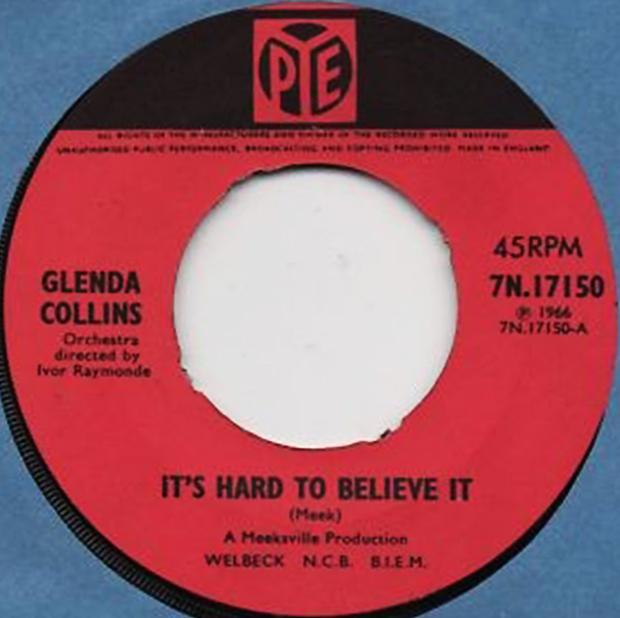
Our journey through the world of space age pop ends with one of the most “out there” sounding recordings of the bunch – another Joe Meek production – but a song that returns us to the earthly concerns of our home planet. Glenda Collins’ signature single wasn’t a major hit, but it juxtaposes the contemporary fascination with space exploration against the myriad continuing struggles of the human condition. There’s no great answer provided, but it serves as a poignant reminder that escapism only lasts for so long.


